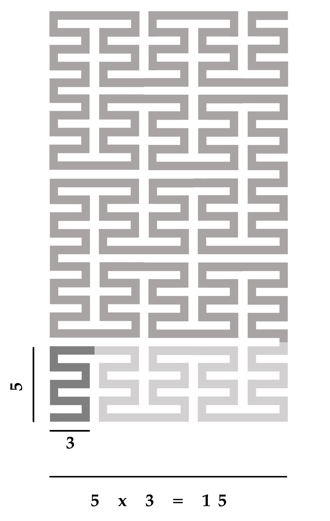The Murray Polygon
The entrance of the Jack Cole Building depicts a Murray Polygon. The Polygon is a space filling curve in the style of other space filling curves proposed by Peano and Hilbert. The Murray Polygon is a generalisation of Peano Polygons capable of traversing arbitrary rectangular regions. The technique developed by Professor Cole was called mu ltiple ra dix arithmetic, later shortened to Murray.
Peano’s original definition takes a point on the [0,1] interval and splits it into two real base-three numbers by taking all the odd indexed digits in their sequential order as the x value and all the even ordered digits in their sequential order for the y value to obtain the point (x,y).
Murray integers is a number system in which each integer is represented as a sequence of digits
dn dn-1 dn-2….d1
together with a sequence
rn rn-1 rn-2….r1 of radices
such that for each i we have 0 ≤ di ≤ ri - 1.
Professor Cole named the Murray integers with odd radix Murray-o integers and those with even radix Murray-e integers. He then went on to show that any sequence of Murray integers could be transformed to describe a polygon such as the one shown below. This program can be generated by the S-algol program, written by Professor Cole, with inputs:
- number of x radices: 2
- number of y radices: 2
- x radices: 3, 5
- y radices: 5, 5
The resultant curve contains the Murray integers ranging from 1 to 375. All the points with integer coordinates within a rectangle 15 by 25 are traversed with all the steps between consecutive points being of magnitude one. He named these curves Murray Polygons.
Professor Cole realised that these techniques were not just a mathematical curiosity but could be applied to problems in computer graphics such as compaction for storage, transmission and object identification. This is now a recognised field in computer graphics known as fractal compression.
